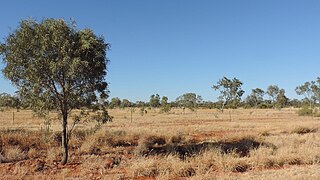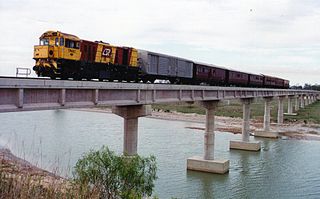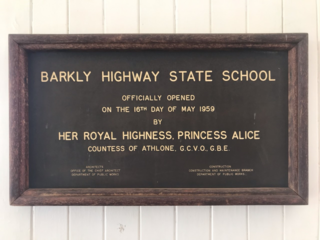
Mount Carbine is a rural town and locality in the Shire of Mareeba, Queensland, Australia. In the 2016 census, the locality of Mount Carbine had a population of 101 people.

Springlands is a rural locality in the Whitsunday Region, Queensland, Australia.

Mount Mort is a rural locality in the City of Ipswich, Queensland, Australia. In the 2021 census, Mount Mort had a population of 78 people.

Wyaralong is a rural locality in the Scenic Rim Region, Queensland, Australia. In the 2016 census, Wyaralong had a population of 20 people.

Lawn Hill is an outback locality split between the Shire of Burke and the City of Mount Isa in Queensland, Australia. The locality is on the Queensland border with the Northern Territory. In the 2021 census, Lawn Hill had a population of 63 people.

Waverley is an outback locality in the Shire of Boulia, Queensland, Australia. In the 2021 census, Waverley had a population of 6 people.

Ogmore is a rural town and coastal locality in the Livingstone Shire, Queensland, Australia. In the 2016 census, the locality of Ogmore had a population of 105 people.

Campaspe is a rural locality in the Charters Towers Region, Queensland, Australia. In the 2021 census, Campaspe had a population of 123 people.

Mount Isa City is the central suburb and central business district of Mount Isa in the City of Mount Isa, Queensland, Australia. In the 2016 census, Mount Isa City had a population of 95 people.

Talaroo is an outback locality in the Shire of Etheridge, Queensland, Australia. In the 2021 census, Talaroo had a population of 5 people.

Winchester is a rural locality in the Isaac Region, Queensland, Australia. In the 2021 census, Winchester had a population of 13 people.
Albinia is a rural locality in the Central Highlands Region, Queensland, Australia. In the 2021 census, Albinia had a population of 165 people.

Leslie Dam is a locality in the Southern Downs Region, Queensland, Australia. In the 2021 census, Leslie Dam had a population of 118 people.
Springdale is a rural locality in the Southern Downs Region, Queensland, Australia. In the 2021 census, Springdale had a population of 28 people.
Kemmis is a rural locality in the Isaac Region, Queensland, Australia. In the 2021 census, Kemmis had "no people or a very low population".

Barkly is an outback locality in the City of Mount Isa, Queensland, Australia. The locality is on the Queensland border with Northern Territory. In the 2021 census, Barkly had a population of 25 people.

The Gap is a suburb of the town of Mount Isa in the City of Mount Isa, Queensland, Australia. In the 2021 census, The Gap had a population of 817 people.

Soldiers Hill is a suburb in the City of Mount Isa, Queensland, Australia. In the 2021 census, Soldiers Hill had a population of 1,796 people.
Ryan is a mixed-use suburb in the City of Mount Isa, Queensland, Australia. In the 2021 census, Ryan had a population of 105 people.
Mount Isa is a rural locality in the City of Mount Isa, Queensland, Australia. It is the land that surrounds the suburbs of the town of Mount Isa. In the 2021 census, the locality of Mount Isa had a population of 172 people.


















